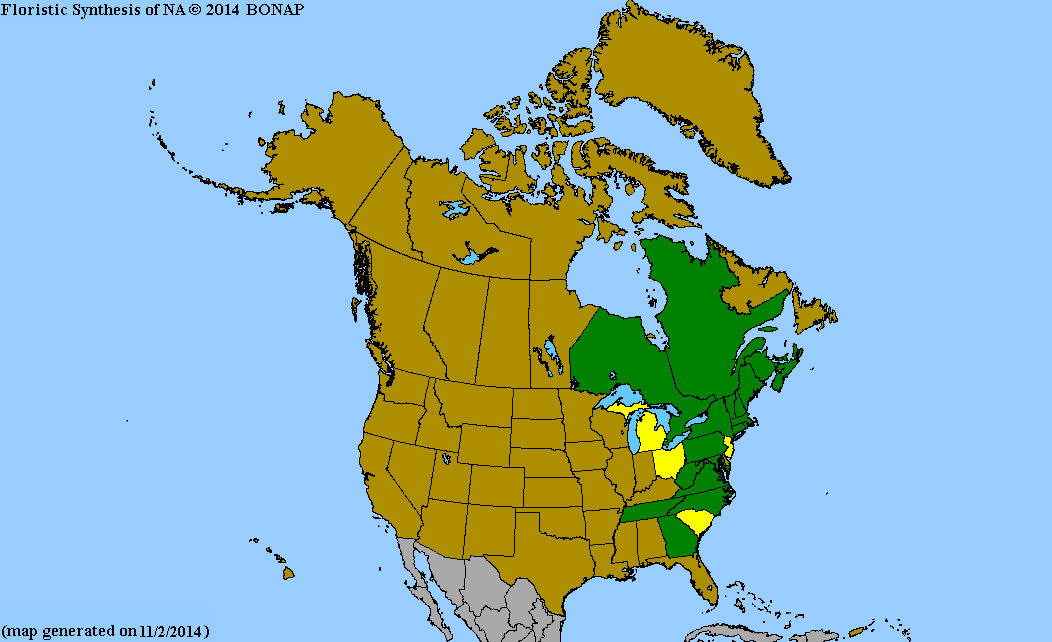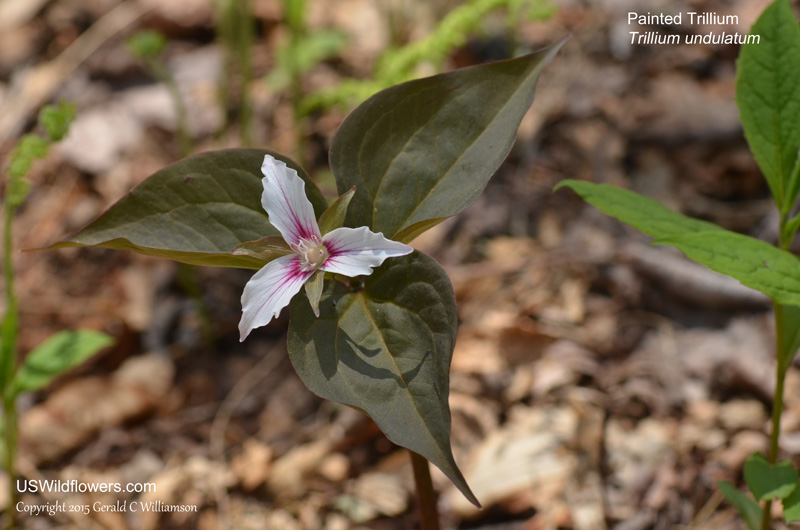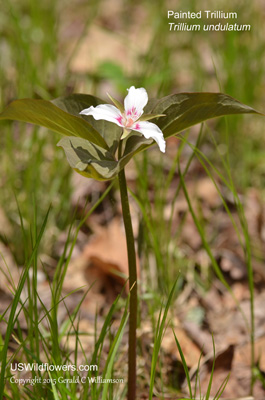Wildflowers of the United States | |||||||||||||||||||||||||||||||
| |||||||||||||||||||||||||||||||
Trillium undulatum - Painted Trillium, Painted Wakerobin, Painted Lady. Trillium was formerly classified in Liliaceae, but most authorities have placed it in Melanthiaceae, because unlike other Liliaceae, the petals and sepals of Trillium are distinctly different. A number of respected authorities now place Trillium in Trilliaceae. I'm hanging on to Liliaceae until the dust settles.
| Trillium undulatum is one of the pedicellate Trilliums, frequently referred to as Wakerobins; this species is also known as Painted Wakerobin. It's mostly a species of the northeastern United States and eastern Canada, with some populations as far west as small parts of Ohio and Michigan. It's found in the Appalachian mountains in southern Pennsylvania thru the Virginias and south as far as northern Georgia and northern South Carolina. It is classified as Threatened, Endangered, or Vulnerable in Kentucky, Michigan, New York, and Ohio. It grows in acidic forests, usually in deeply shaded areas except in the higher elevations. It is reported that the berries and roots have low levels of toxicity if eaten. It blooms in late spring and early summer. Found in: CT, GA, KY, MA, MD, ME, MI, NC, NH, NJ, NY, OH, PA, RI, SC, TN, VA, VT, WV, GS Leave comments on Trillium undulatum at this link.   Map courtesy of The Biota of North America Program. Map color key Search Our Database: Enter any portion of the Scientific, Common Name, or both. Do a general Google search of the entire site: #ad
| #ad
| | ||||||||||||||||||||||||||||
|
Commercial / Cookie Notice Looking for Wildflowers for a specific state? Check here: | |||||||||||||||||||||||||||||||
|
All content except USDA Plants Database map Copyright Gerald C. Williamson 2025 | |||||||||||||||||||||||||||||||
Code Update 20230302



